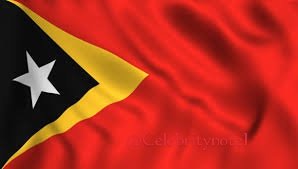The World’s 5 Newest Countries
In a world of 195 recognized nations, new countries often emerge from independence struggles, political agreements, or the dissolution of larger states. Each new nation brings its own unique challenges and opportunities. Take a look at the five newest countries and what makes them stand out.

The World’s 5 Newest Countries
In a world of 195 recognized nations, new countries often emerge from independence struggles, political agreements, or the dissolution of larger states. Each new nation brings its own unique challenges and opportunities. Take a look at the five newest countries and what makes them stand out.
Table of Contents
Toggle1. South Sudan (2011)

South Sudan became the world’s youngest country on July 9, 2011, following decades of conflict with Sudan. It achieved independence through a landmark 2011 referendum, where nearly 99% of South Sudanese voted for separation. Despite this achievement, the country faces challenges, including a civil war that lasted from 2013 to 2020. Its rich oil reserves hold potential for economic growth, but development has been hampered by ongoing humanitarian crises.
2. Montenegro (2006)

Montenegro’s peaceful separation from Serbia on June 3, 2006, made it a model for diplomatic conflict resolution. Its path toward European integration has been steady; it joined NATO in 2017 and is working toward EU membership. With stunning Adriatic coastline and mountain ranges, Montenegro has emerged as a popular tourist destination, contributing to its growing economy.
3. Serbia (2006)

After Montenegro declared independence, Serbia became its own state on June 5, 2006, inheriting membership in key international organizations. Its cultural and historical significance, especially as the cradle of the medieval Serbian empire, makes Serbia a unique destination. The unresolved status of Kosovo, which declared independence in 2008, remains a significant political challenge.
4. Timor-Leste (2002)

Timor-Leste, also known as East Timor, gained independence on May 20, 2002, after enduring decades of conflict under Indonesian occupation. Known for its resilience, Timor-Leste is rebuilding its economy with a focus on its oil and gas resources. The country also boasts stunning natural beauty and a rich cultural heritage rooted in its Austronesian and Portuguese influences.
5. Palau (1994)

Palau’s independence on October 1, 1994, was formalized under a Compact of Free Association with the United States, ensuring financial aid and defense support. This Pacific island nation is a global leader in marine conservation, with its innovative Palau National Marine Sanctuary protecting 80% of its waters. Its unique mix of Micronesian culture and ecological stewardship makes it a standout among nations.
These new countries symbolize resilience and the pursuit of self-determination. And echoes the popular ideology animated by Nelson Mandela that “it’s not in history of a people who attained free determination on a silver platter”. While they face distinct challenges, they also bring unique cultural, natural, and political contributions to the global community.









